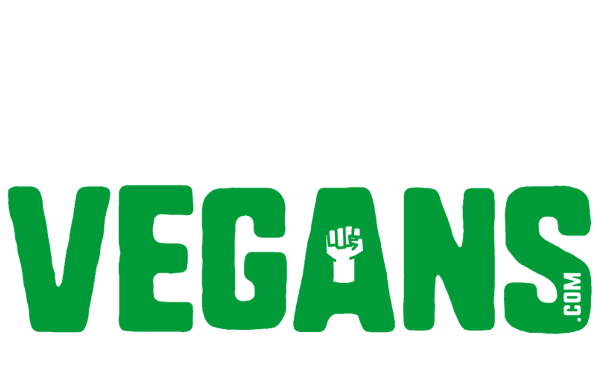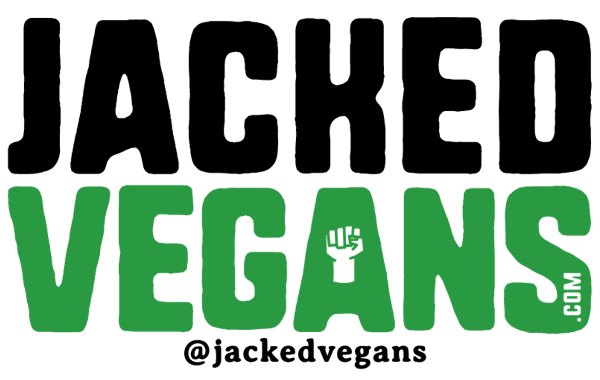Vegan bodybuilding seems unrealistic for a lot of people.
And it’s easy to see why. After all, if you grew up eating meat, you’d think that the only source of nutrient dense protein derives from animal products.
The transition to veganism is already difficult, so what more for vegan bodybuilding right?
But here’s the thing: The same principles will apply to you whether you’re bodybuilding or not: burn more calories than you consume to lose fat, eat more calories than you burn to gain tissue, apply progressive overload in the gym and eat sufficient protein to fuel muscle repair..
The last part is typically a prime concern for vegans; so today we will address overall nutrition, hitting macronutrient splits, proper resistance training, and meal planning. The insight provided will aid you in structuring a literature-supported, body composition-focused, health routine that you can be confident in!
What is a vegan bodybuilding diet like?
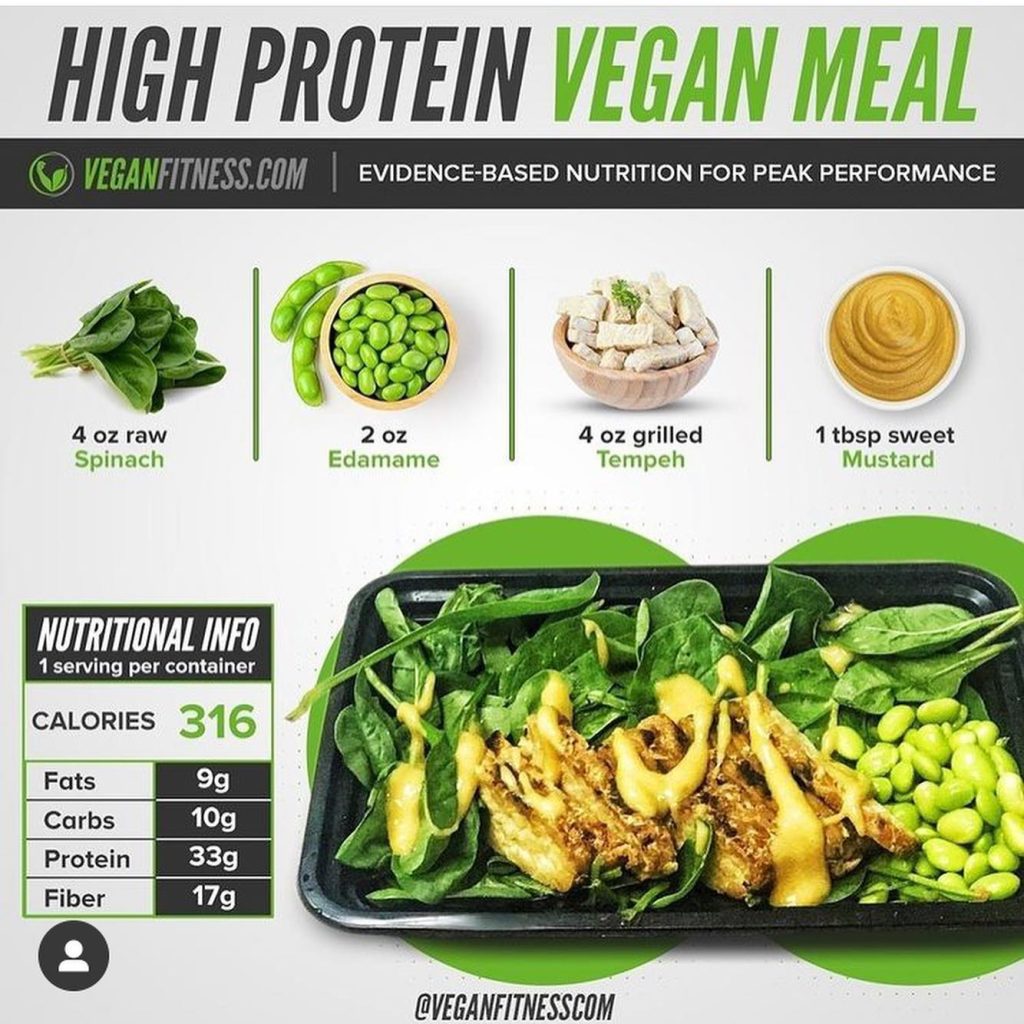
Is it possible to build muscle as a vegan?
How do vegans build muscle?
Can you be vegan and a bodybuilder?
If you’re vegan and you lift weights or do body building, perhaps you’ve heard one of these questions before.
Nutrition is key regarding building or sustaining muscle tissue, whether you’re vegan or not. Prioritizing dietary consumption is subjectively harder than the resistance training side of a health plan. If nutrition is consistently neglected then full potential will NEVER be reached as a vegan bodybuilder.
Bodybuilders have to know how many calories their bodies need daily in order to optimize body composition. In addition to understanding daily caloric intake, it is absolutely crucial to compute total daily macronutrient amounts of protein, carbohydrates and fat. Applying these constituents is inevitable if the desire is to attain prime physique.
Lastly, they want to ensure that they meet these requirements by tracking their food and beverage intake throughout the day. For those that are new to lifting weights or bodybuilding, counting calories and macros might sound foreign, difficult, and counter intuitive. But it’s part of the process if your goal is to build muscle.
The only real difference between a vegan and omnivore bodybuilder is the source from which they get their protein.
Implementing a vegan bodybuilding diet
The best sources of protein for vegans originates with both processed and whole based foods.
Now, this may sound counter intuitive but let me explain! Some processes foods, like vegan protein powders, are convenient, versatile, lean, and help meet daily protein requirements without adding a ton of calories from carbohydrates and fats.
They can be added to smoothies, protein pancakes, and a variety of different high protein recipes for an awesome breakfast or snack that’s delicious and easy to make. Although these benefits are AWESOME, protein powder is still considered a processed food and thus could rub people the wrong way. But have no fear! The benefits far outweigh the mythical denotations applied to protein powder.
Vegan foods typically contain fewer calories compared to meat or animal products therefore we must compensate by loading up on more whole food that is high in calories but nutrient-dense such as avocados, nuts, nut butter, chia seeds, quinoa, tahini, olive oil, legumes, sweet potatoes, coconut oil, and rice. However, this is becoming less apparent since companies are now veganizing everything – even all the junk food.
Supplementation
In addition to consuming calorically dense food, supplementation is crucial as well. Here’s what you need to know about it:
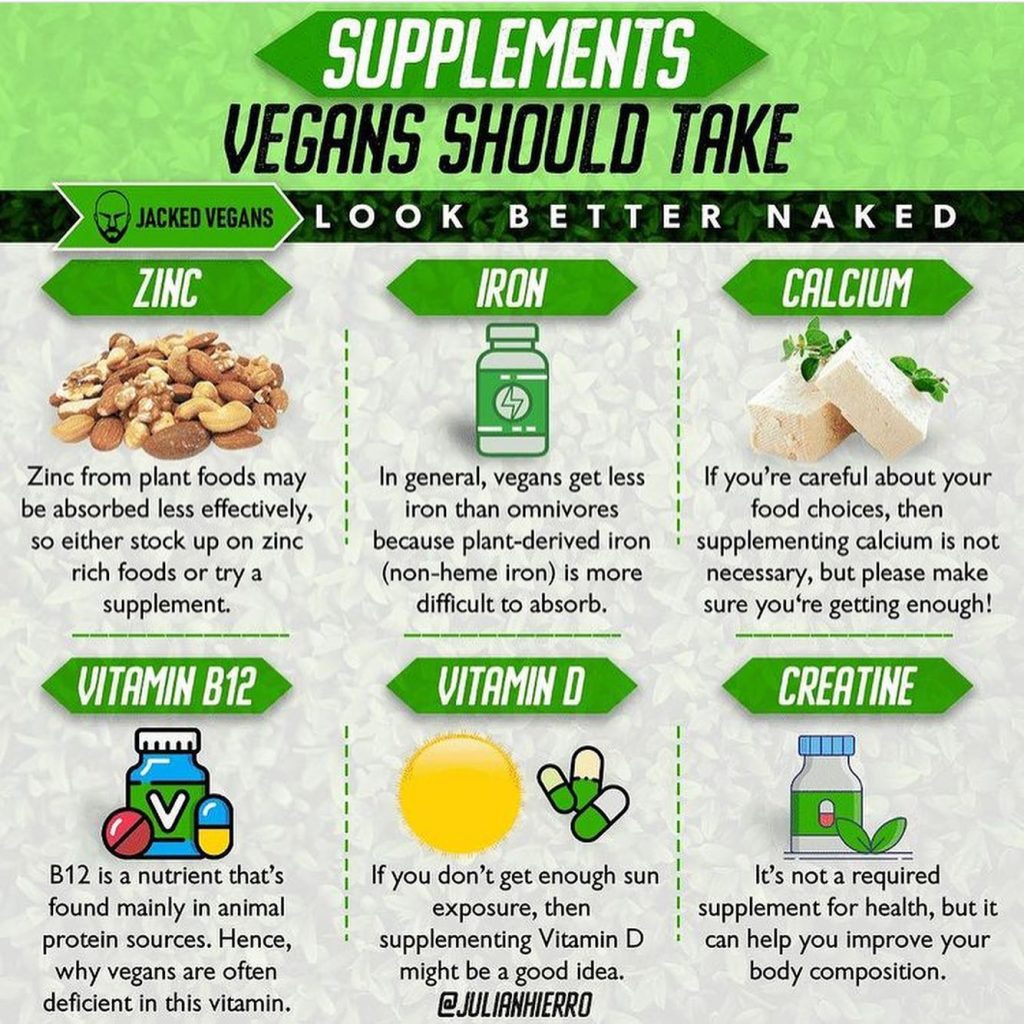
Vegans have to supplement with extra vitamins to make sure they get everything their body needs to be healthy. Vegans have to take calcium, iron, vitamin B12, zinc, vitamin D, and omega 3’s by either consuming fortified vegan foods or through multivitamin supplements.
How much protein, carbs, and fats should you eat?
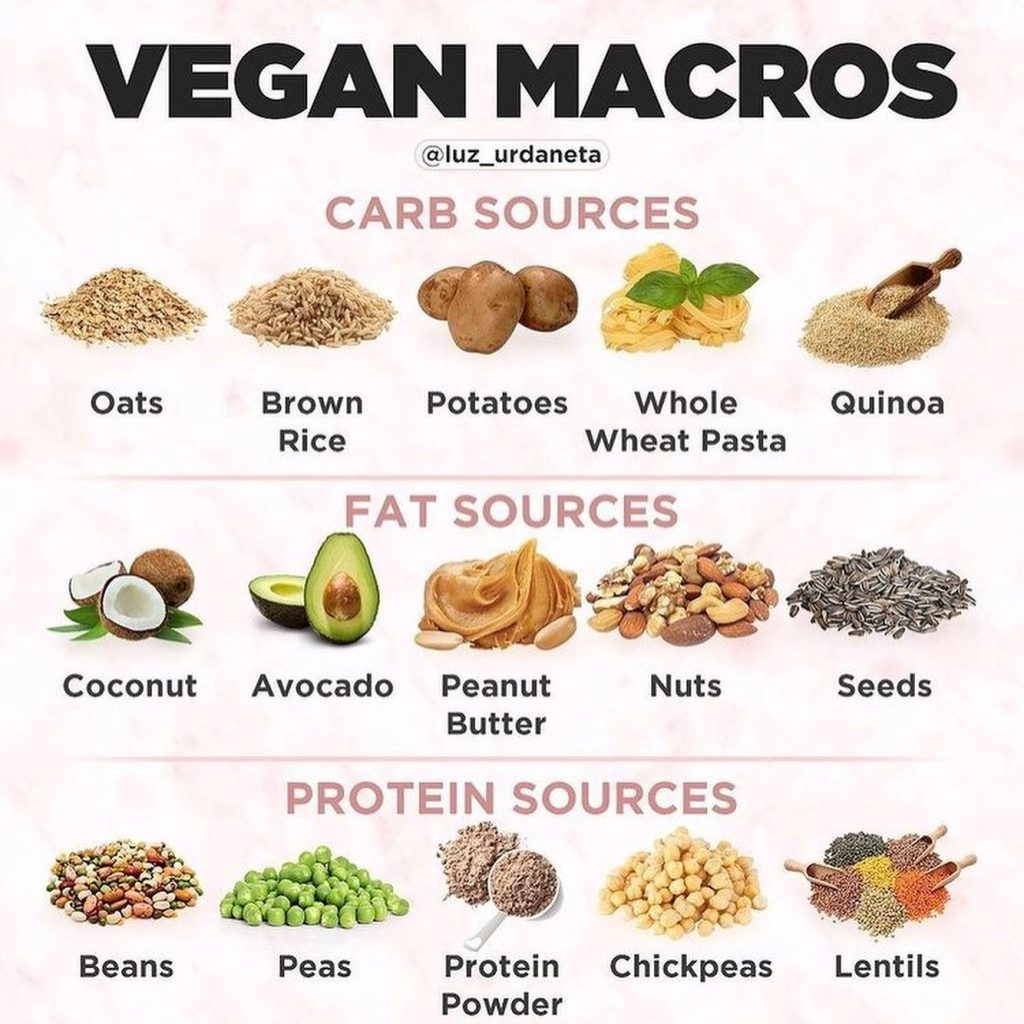
Use the Jacked Vegans diet calculator to find out the amount of calories you need to maintain your body weight.
This will be the foundation of your fat loss, muscle gain, or maintenance diet through your vegan bodybuilding journey.
Now that you know how many calories you’re supposed to consume, let’s break them down into your macros. The amount could vary depending on several factors but a good rule is consuming:
- Protein: 0.8-1.0 gram per pound of body weight (4 calories per gram)
- Fats: 0.3 grams per pound of body weight (9 calories per gram)
- Carbs: the rest of the calories (4 calories per gram)
Example: For a 40 year old male with an active lifestyle to maintain a body weight of 165 lbs, he should be consuming around 2907 calories a day. The breakdown is as follows:
- Protein – 148 grams
- Fats – 41 grams
- Carbs – 485 grams
Vegan Bodybuilding: Should you cut or bulk first?
There are three phases in bodybuilding: Bulking, maintaining, and cutting.
If you’re not sure if you need to cut first or to bulk first, think of it this way:
If you cannot see your abs, then you should start a cutting phase first. It’s counterproductive to start bulking if you’re at more than 12% (males), 22% (females) body fat because as you bulk and put on muscle, you also put on fat.That’s just how it is.
Depending on how much body fat you have to lose, one cutting phase might be enough, but if you have over 30 lbs to lose, it might take you a few cutting phases to get lean. In that case, you have to go do a cutting phase, maintenance phase, then another cutting phase until you get to at least <12% (males) <20% (females) body fat, then you can do your bulking phase.
The different Vegan bodybuilding phases
Cutting phase (fat loss phase)
When going through a fat loss phase, the goal is to lose as much fat as possible, while retaining all muscle tissue.
How?
When you reduce calories, you want to make sure you’re eating as many calories as you can while still losing body fat. For example, it’s counterproductive for long term health to reduce calories to 1200 if body fat can still be lost at a good rate with a 2400 calorie diet. In addition to losing muscle tissue, dropping too low in calories will likely result in a “yo-yo” affect where a rebound is unavoidable. Whereas, with a higher calorie diet adherence it’s significantly easier as satiety is way more manageable.
When going on a fat loss phase, you want to:
- Aim for losing 1% of body weight lost per week (if you’re a bit larger and have plenty of weight to lose then it’s okay to lose a bit more than that).
- Lose around 5-10% of body weight per fat loss phase (if you’re losing less than 4% of your body weight per fat loss phase, that’s too low).
- After every fat loss phase, run a maintenance phase that’s at least half the time of your previous deficit.
How to do it?
First, calculate your maintenance calories.
Next, we calculate the caloric deficit required to lose fat.
Example: For a 200 lb individual, 1% of body weight is 2 lbs of weight to lose per week
One pound of body weight is equal to 3500 calories
2 x 3500 = 7000 calories
7000 calories/ 7 days = 1000 calories below maintenance each day
If this person requires 3000 calories to maintain weight, that means to lose 1% body fat each week, this person needs to eat 2000 calories each day.
Maintenance phase
You should run a maintenance phase after either a bulking or a cutting phase.
A longer duration calorie deficit is very taxing on your CNS (central nervous system) and provides chronic physiological, social, and psychological stress. So raising calories to maintenance will replenish motivation and desire to diet, and help with recovery from a stressful physiological condition.
Toward the end of a fat loss phase, lethargy starts to onset resulting in a radical decrease of NEAT (non-exercise activity thermogenesis, or the energy spent on physical activities outside of exercise like walking, standing, talking, etc), and thus total daily caloric output consequently drops. In addition, more stress hormones will be secreted, hunger levels will be astronomically high, and chances of bingeing increase. These segments make losing fat harder and harder and are credible reasons to end fat loss diets after a certain duration of time.
I know it’s tempting to start eating whatever you want after a cutting phase but this is where you should exercise patience and self control otherwise, you’ll end up with a rebound weight gain and get back all the fat you lost.
How to do it?
Simply add 300-500 calories to your diet and track your body weight for a few weeks. Repeat as many times until your body weight stabilizes. Note: With the initial increase in carbohydrates you WILL gain weight immediately from stored glycogen and water. Anything past ½ pound gained in the first week is NOT fat, it is retention from new nutrients being added.
A maintenance phase should last about half the duration of your cut or gain phase. So if you were in a deficit for 10 weeks, then maintenance can be about five weeks long.
After a bulking phase, you also want to give your body some time to adjust to the new weight and bring it back to homeostasis.
To do this, subtract calories from your total intake and monitor body weight for a couple weeks.
Repeat as many times as needed until body weight stabilizes.
You risk losing the muscles you built if you go on a cutting phase right away after bulking which is why you want to go on maintenance in half the number of weeks as your muscle-building phase.
Bulking phase (muscle gain phase)
If you’re naturally skinny like some people, then go ahead and do the bulking phase right away.
If you’re a male, it’s beneficial to start a bulking phase when you’re at 8%-12% body fat. Start your bulk and focus on gaining muscle and weight for three months.
Your goal should be to increase body weight by 0.25% – 0.5% per week. This allows you to build muscle while adding as little fat as possible. It’s also best to undergo a training program that maximizes muscle growth during this period.
So let’s look at how you can minimize fat gain during a muscle building diet:
- Start your muscle building phase already lean (at least 10% men/ 20% body fat women).
- Gain around 0.5% of your body weight per week. This allows for noticeable changes in the amount of muscle you carry, and will keep body fat levels low.
- Gain between 5% of your body weight per phase.
How to do it?
First, calculate your maintenance calories.
Next, we calculate how many calories to consume in order to gain weight.
Example: For a 200 lbs male, the goal is to put on 1 lb per week.
1 lb x 3500= 3500 calories
3500/7= 500 calories above maintenance level daily
If this person’s maintenance calorie is 3000 per day, then he should consume 3500 calories daily to put on 1 lb of weight a week.
Or you can use our Jacked Vegan Calculator here to figure out your calories and macros.
Vegan bodybuilding meal plan
Here’s a sample meal plan that you can use. Of course it’s not for everyone but if it’s close to the amount of calories you need to consume then feel free to use it as a guide. Just make the necessary adjustments to meet your calorie and macros for the day.
When building your own meal plan that fits your individual calories and macros, make sure you plan your meals 1-4 days in advance to get all the foods and ingredients needed in one trip to the grocery and to be able to make a complete meal.
Make your meals as enjoyable as possible as no one wants to eat plain, bland food over and over again.
Some people like to rotate 4-5 types of breakfast, lunch, or dinner they really like and stick to them for simplicity’s sake of easier meal planning.
VEgan bodybuilding meal plan: Day one
Daily Total: Calories 1849
- Carbs 254 grams
- Protein 112 grams
- Fats 54 grams
Breakfast: Simple vegan pancake

Vegan protein powder, oatmeal, banana, soy milk, peanut butter
Carbs: 63 grams Protein: 42 grams Fats: 15 grams Calories: 516
Lunch: Quinoa bowl
Quinoa, broccoli, mushrooms, green beans, spinach, carrot, avocado, vegan sausage
Carbs: 59 grams Protein: 30 grams Fats: 11 grams Calories: 406
Dinner: Vegan burrito
Tortillas, cooked rice, smoked tofu, black beans, tomato, sweet corn, spinach (optional) onion or yellow pepper (optional) jalapeno slice (optional)
Carbs: 107 grams Protein: 35 grams Fats: 18 grams Calories: 737
Snacks: Apples + peanut butter
Carbs: 25 grams Protein: 5 grams Fats: 10 grams Calories: 190
VEGAN BODYBUILDING MEAL PLAN: Day two
Daily total: Calories 1409
- Carbs 143 grams
- Protein 96 grams
- Fats 46 grams
Breakfast: Fancy waffles
Vegan protein powder, hotcake flour, frozen banana, soy milk, peanut butter
Carbs: 49 grams Protein: 39 grams Fats: 14 grams Calories: 459
Lunch: Rice + beans
Wilds rice, beans/lentils, green beans, spinach, carrot, garbanzo beans, avocado, seitan
Carbs: 59 grams Protein: 34 grams Fats: 9 grams Calories: 436
Dinner: Vegan sandwich

Vegan bread, “chicken strips” (Gardein), vegan cheese, avocado, tomato, lettuce, onion, spinach (optional), mushrooms (optional)
Carbs: 35 grams Protein: 21 grams Fats: 18 grams Calories: 404
Snacks: Salty rice cakes
Rice cakes, avocados, nutritional yeast
Carbs: 15 grams Protein: 2 grams Fats: 5 grams Calories: 110
VEGAN BODYBUILDING MEAL PLAN: Day three
Daily Total: Calories 1817
- Carbs 204 grams
- Protein 156 grams
- Fats 65 grams
Breakfast: Scrambled tofu
Tofu, beans, onion, tomato, spinach, vegan meat, avocado
Cabs: 40 grams Protein: 41 grams Fats: 15 grams Calories: 367
Lunch: Cuban bowl
Quinoa, black beans, Jicama, beet, broccoli, corn (optional), avocado, vegan sausage
Carbs: 58 grams Protein: 35 grams Fats: 10 grams Calories: 421
Dinner: Vegan kebab
Seitan, yellow/red pepper, flour tortilla, romaine lettuce leaves, red onion, onion powder, cumin, soy sauce, garlic powder, curry powder, tahini, lemon juice
Carbs: 55 grams Protein: 35 grams Fats: 6 grams Calories: 400
Snacks: Choco protein smoothie
Vegan protein powder, hemp seeds, ripe banana, oats, nut butter, chia seeds, cacao powder, almond milk
Carbs: 51 grams Protein: 45 grams Fats: 34 grams Calories: 629
VEGAN BODYBUILDING MEAL PLAN: Day four
Daily total: Calories 1540
- Carbs 165 grams
- Protein 115 grams
- Fats 56 grams
Breakfast: Smoothie bowl
Vegan protein powder, frozen strawberries, frozen blueberries, pure maple syrup, freshly chopped mint, tofu (firm)
Carbs: 44 grams Protein: 45 grams Fats: 13 grams Calories: 442
Lunch: Big salad
Lettuce, carrot, cucumber, garbanzo beans, dehydrated cranberry, avocado, vegan sausage, almonds, quinoa
Carbs: 43 grams Protein: 36 grams Fats: 13 grams Calories: 388
Dinner: Spaghetti
Vegan spaghetti pasta, Beyond Beef, tomato (fresh), onion
Carbs: 43 grams Protein: 28 grams Fats: 19 grams Calories: 454
Snacks: Sweet rice cakes
Rice cakes, peanut butter, banana
Carbs: 35 grams Protein: 6 grams Fats: 11 grams Calories: 256
VEGAN BODYBUILDING MEAL PLAN: Day five
Daily total: Calories 1347*
- Carbs 176.6 grams
- Protein 108 grams*
- Fats 35.5 grams *
Breakfast: Enfrijoladas
Tofu, beans, soy milk, onion/tomato (optional), spinach (optional), vegan cheese, vegan chorizo, corn tortillas, avocado
Carbs: 57 grams Protein: 32 grams Fats: 15 grams Calories: 435
Lunch: Lentil soup
Spinach, tomato, peppers, broccoli, zucchini, carrots, sweet potatoes, lentils, garlic, avocado, vegan meat
Carbs: 40.5 Protein: 37 grams Fats: 8 grams Calories: 346
Dinner: Vegan tacos
Tortillas (corn), vegan meat, beans, spinach, onions, avocado
Carbs: 44 grams Protein: 36 grams Fats: 11 grams Calories: 419
Snacks: Strawberries (500 grams)
Carbs: 35.1 grams Protein: 3 grams Fats: 1.5 grams Calories: 147
VEGAN BODYBUILDING MEAL PLAN: Weekend meals
Vegan pizza

Pizza dough, tomato sauce, spinach, carrots, vegan chorizo, vegan cheese, your favorite veggies, oregano
Whole pizza / Per slice
Carbs: 75 grams/ 19 grams
Protein: 32 grams/ 8 grams
Fats: 31 grams / 8 grams
Calories: 846 / 211
Beyond burger
Beyond meat (burger), hamburger bun, vegan cheese, avocado, tomato, lettuce, vegan mayo
Carbs: 50 grams Protein: 26 grams Fats: 36 grams Calories: 603
Veggie burger
Eggplant, portobello, vegan cheese, avocado, tomato, lettuce, onion, spinach, vegan mayo
Carbs: 28 grams Protein: 8 grams Fats: 15 grams Calories: 261
Quinoa bean burger
Sweet potato, quinoa, olive oil, rosemary, chili flakes, kidney beans, hamburger bun, lettuce/onion/tomato, vegan mayo
Carbs: 75 grams Protein 19 grams Fats: 7 grams Calories: 446
Meal prep tips for vegan bodybuilding
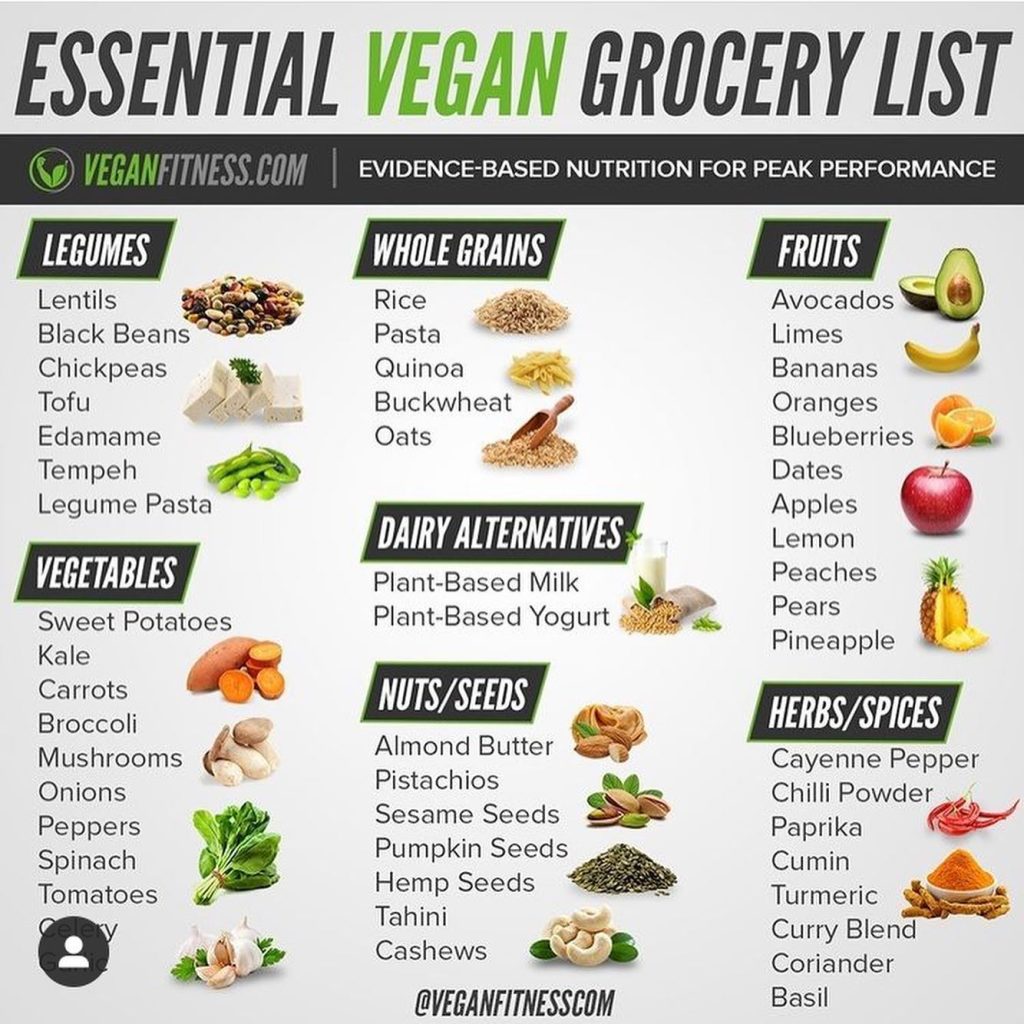
- Make a plan – this could be full recipes or a list of food components
- Make a grocery list – self-explanatory here. Prepare a list of the things you need to make your meals
- Plan meals ahead of time – take a few minutes the night before to plan what you’re going to eat the next day. When you wake up, all you have to do is to execute the plan you made the day before.
- Use an app to plan out your meals and macros, MyFitnessPal is a good option.
- Double your portions when making one meal – by doubling my portions, I get two meals in one single cooking
- Get a rice cooker – all the carbs for the day, I prepare the night before. It makes it easier to prepare the carbs I need for the day.
Vegan Bodybuilding and training for hypertrophy
Now that you got the nutrition part nailed down, it’s time for the other crucial part: training. Let’s divide it into the following: Beginner, Intermediate, Advanced.
There’s a different approach to training for each category therefore it’s important to identify which group you belong to. Below is a basic guideline for training for muscle growth for each.
Check out my training plan here (DON’T USE THIS PLAN, THIS IS BUILT FOR MY SPECIFIC GOALS)
Beginners
Characteristics
- 0-4 months of training.
- They find it fairly easy to lift and keep getting bigger and stronger automatically (newbie gains)
- They get stronger even without losing weight.
Training:
- Do mostly sets of 5 – 10 reps
- Should focus more on the basics of compound movements such as squats, deadlifts, bench press, rows, pull-ups, etc.
- There should be plenty of focus on learning, improving, and solidifying techniques.
- Avoid training too close to failure because of the possibility of their technique breaking down.
- Avoid doing super-high volumes. Train until you feel challenged, then reduce the volume and increase the weight on the bar.
- Train each muscle 2-4 times a week.
- The main focus is compound lifts.
Intermediate bodybuilding
Characteristics
- You’ve hit your first plateau and had to figure around it, you need to nail the basics in order to consistently keep progressing.
- You get a little stronger during weight loss periods, but just barely.
Training
- Do mostly sets of 5-10 and 10-20 reps
- Focus mostly on the compound basics and some isolation, mostly free weights
- Focus on altering basic technique to fit their stimulus to fatigue ratio (example. Squats=start exploring if it’s better for them to do squats with feet closer to each other or further apart, Bench=different kinds of grips). Training which one feels better for them.
- Focus on reaching failure, breaking physical and mental barriers
- Train each muscle 2-4 times a week in 3-6 total sessions
Advanced bodybuilding
Characteristics
- If your sleep, recovery, nutrition, and training isn’t meticulous and well planned, you simply don’t make gains.
- Best case, you maintain during weight loss, often you lose a bit of rep strength
Training
- Should do mostly sets of 10-20, with some 5 -10 and some 20-30 reps
- Focus mostly on the best stimulus to fatigue ratios (compound, isolation, or a mix of both).
- Explore exercises and techniques that maximize fatigue.
- Train to failure and beyond while maintaining a strong mind-muscle connection (the conscious and deliberate contraction of the target muscle).
Building muscle as a vegan is possible!
Being a vegan bodybuilder will take hard work and determination, but all you need is to follow the tips outlined in this article and you’ll be well on your way to becoming a vegan bodybuilder.
To recap, these are the things we talked about for a successful vegan bodybuilding journey:
- Find out the calories you need to maintain your body weight
- Figure out your macros
- Figure out if you will cut or bulk up first
- End each cutting or bulking phase with a maintenance phase with roughly the similar length as your cutting or bulking phase
- Load up on protein from plant-based sources
- Don’t forget to supplement especially for the essential macro nutrients
- Prepare your meals in advance
- Whether you’re a beginner, intermediate, or advanced in training for hypertrophy, train for your appropriate category for better long term muscle growth and maintenance
These might seem like a lot and overwhelming but if you chunk things down and work little by little to inch forward in your vegan bodybuilding goals, there’s no doubt that anything is possible.
Enjoy the journey!
_________________________________________________________________________
We’ve helped thousands of vegans shred fat, build muscle, and get the body they’ve always wanted.
How? With our 1:1 coaching program – The Jacked Vegans Academy. In the program, we provide nutrition, fitness, mindset, and accountability. We literally baby step our clients to the their goal.
If that sounds like something you could benefit from to finally get in shape and become a healthier person, apply to become a Jacked Vegan !

